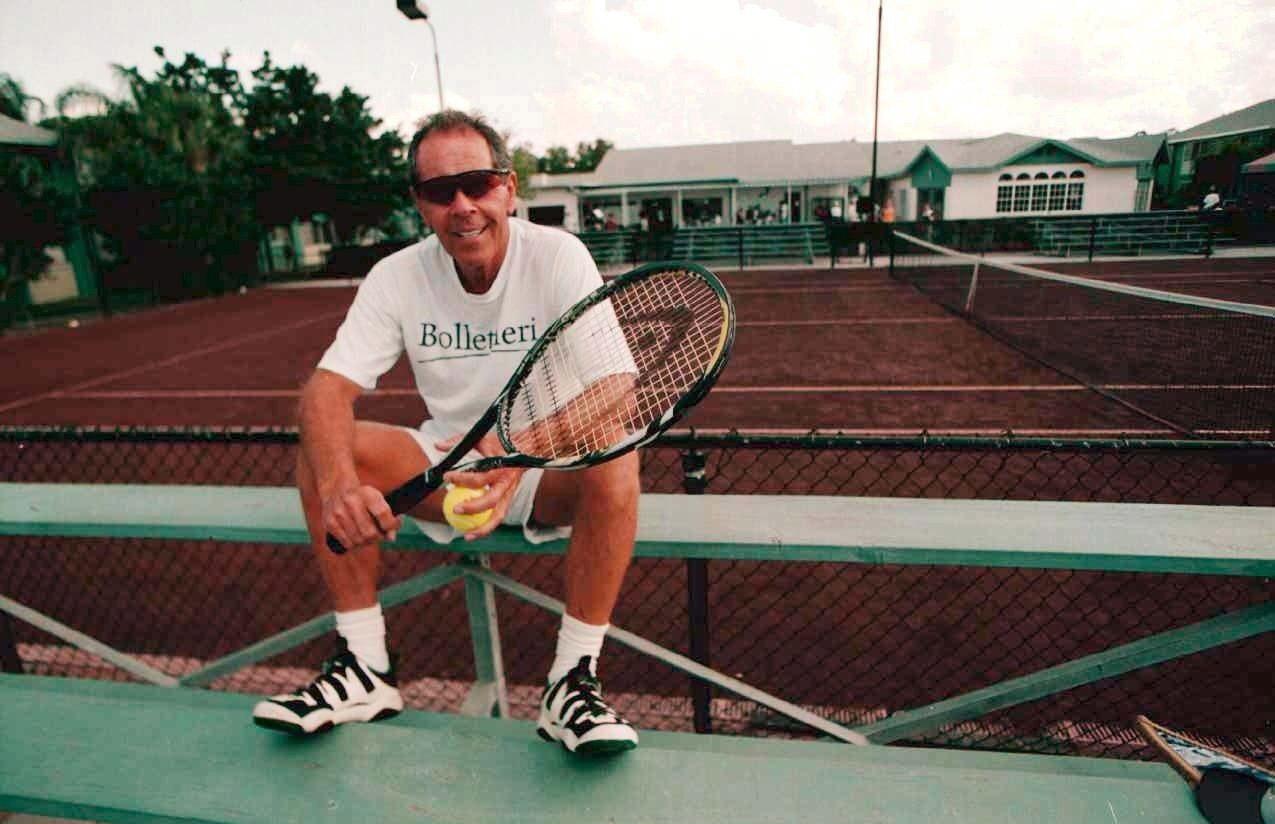
Nick Bollettieri loves to brag. He brags that he was the first person to take young tennis players from their homes and pull them into a training academy. He brags that the winners of 180 major titles have passed through his grounds. He brags that he has no regrets. That he can’t tell you the names of all eight of his wives.
Decades ago, though, Bollettieri wasn’t just braggadocious. He was also the man behind a prodigy factory, an academy (now owned and operated by IMG) in Bradenton, Florida, that somehow plopped dozens of students into the draws at slams. In the years since its heyday in the 1980s and early ’90s, the academy has been associated with the Williams sisters, Maria Sharapova, and a handful of other world no. 1s; today, it continues to train top prospects. But Bollettieri is 86 and no longer controlling the shop. His impact on the tennis world has waned since the days when he saw a young Andre Agassi triumph at Wimbledon. Perhaps that’s why Bollettieri feels the need, now more than ever, to brag so much.
Love Means Zero, Showtime’s 89-minute documentary on Bollettieri, his academy, and his relationship with Agassi, is a master class in bravado. The old coach, bronzed and sitting in a pink polo before an array of tennis courts with their nets undone, comes across as Tony Robbins blended with White Goodman. He knows little about the mechanics of the game, he says plainly, but he knows how to make people play their best tennis.
Throughout the 1980s, Bollettieri dropped his pupils into a competitive setting and had them compete for love and pride. The top training court at the academy where Bollettieri fed balls and directed drills was known as “Nick’s court,” and secondary students like Jim Courier grinded tirelessly to earn a chance to hit with Agassi and vie for Bollettieri’s attention. Unspectacular students would live in the academy’s shabby dorms and eat in a cafeteria, while the top players would stay in Bollettieri’s glassy mansion and eat luxuriously.
“I felt like I was his daughter,” says Kathleen Horvath, a student from the late ’70s and early ’80s who in 1979, at age 14, became the youngest player to compete in the main draw of the U.S. Open. Horvath would go on to rank as high as 10th in the world, but left the academy when it became clear she would not emerge as a world-topping star for Bollettieri. He had other, more promising, prospects to worry about. Horvath says she was “kicked out” of the academy. Bollettieri says, as with many other things, that he doesn’t remember what happened.
“If you look at Nick’s history, Nick does not look back. I just go forward,” Bollettieri says early in Love Means Zero. “If I hurt you, maybe I’m sorry. I don’t know.”
What Bollettieri did know, however, was that he was enamored of Agassi, who went on to become the most marketable tennis star of the early ’90s. With his wild mane (not yet revealed to be a wig) and hellish groundstrokes, Agassi was the perfect vehicle for Tinker Hatfield’s neon-and-Lycra-laced Nike outfits, Canon’s infamous “Image is Everything” campaign, and every other advertiser that wanted a hip athlete in what was, at the time, a tremendously unhip sport. Agassi, too, was the perfect vehicle for Bollettieri, who aggressively sought out students who, through their professional successes, would implicitly promote his methods and fill his camps.
Yet the beginning of the pair’s relationship was bittersweet. Even after becoming a marketing boon, Agassi struggled to win a slam, losing the 1990 French Open final to Andres Gomez, the 1990 U.S. Open final to Pete Sampras, and most painfully, the 1991 French Open final to spurned Bollettieri pupil Courier after dropping a set-and-a-break lead. In the doc, Courier says he relishes that moment, especially after his former coach chose to sit in Agassi’s box during their third-round match at the 1989 edition of Roland Garros.
In 1992, Agassi won at Wimbledon, the tournament he had avoided for years in protest of its all-white dress code. But the following year he struggled with injuries, winning just three tournaments and missing the first two majors of 1993 before failing to defend his Wimbledon crown. By July, he’d dropped from a top 10 player in the world to no. 22, and around the same time Bollettieri told USA Today that he was leaving Agassi’s corner. Bollettieri sent his pupil a letter to convey the same message, but it didn’t arrive in Las Vegas before the story ran. Agassi found out that he had been dropped by his mentor along with the rest of the country. He declined to be interviewed for the film.
Love Means Zero paints a fair portrait of Bollettieri; the problem is that he may not be as interesting as one might assume. Director Jason Kohn’s voice frequently cuts through during interviews, trying to press Bollettieri on his mistakes, and interrogate his heartless treatment of young, impressionable pupils, including Agassi, who has been referred to as Bollettieri’s surrogate son. But for the most part the old coach shows no remorse. Maybe he’s a master performer, a Method actor now fully in tune with the character he has been portraying for the better part of 40 years. Or maybe he’s just the logical, horrifying conclusion to high-achievement parenting.
In another time, perhaps Bollettieri’s ruthlessness would have been admirable or, at the very least, novel. But in an era when snake oil salesmen are interviewed on TV every day, whatever Bollettieri and Love Means Zero says about the human condition amounts to more of the same. The film, as an archive of American tennis in pre-Sampras times, is enjoyable, even fun. (Footage of the awkwardly scripted, lobby-music-soundtracked training video featuring Agassi and Bollettieri was pause-the-movie-level funny.) But if it’s supposed to say anything else, it struggles on that front. Bragging goes only so far.